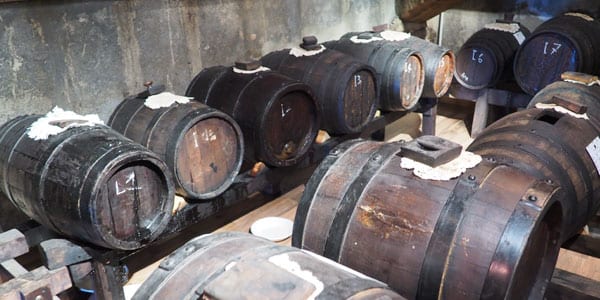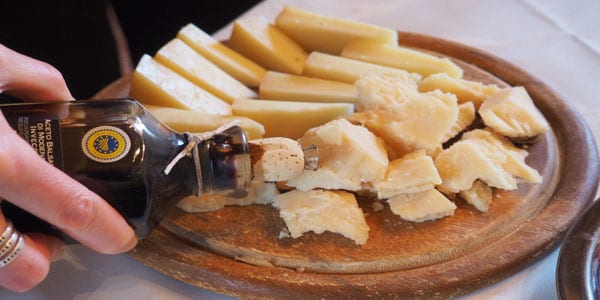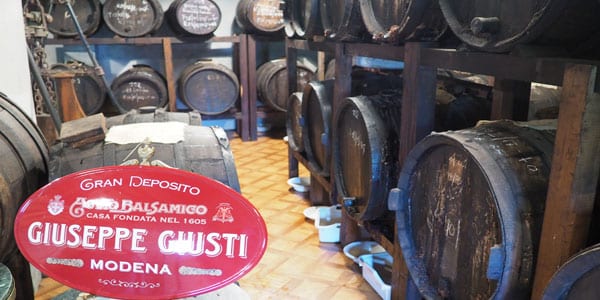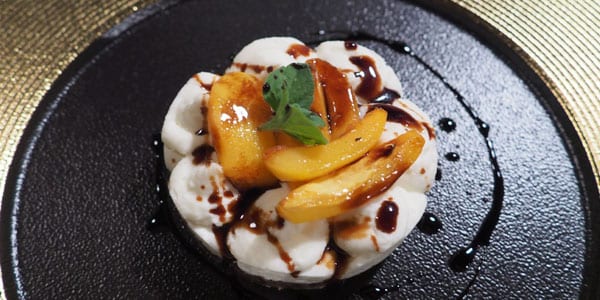Write: Monica Uriel. Journalist
Cars Ferrari coming out of the factory Maranello, in Modena, they try to break speed records. Meanwhile, in the attics of a good part of the houses in this province, the great amount of time (up to 25 years) is one of the essential ingredients of its gastronomic jewel. The balsamic vinegar of Modena it ages in barrels forming the so-called batteries.
El balsamic vinegar is still the best inheritance that one generation can leave to another in Modena. What is called a battery, made up of at least five barrels for the production of this unique vinegar. It is given to children when they reach the age of majority -because it takes 18 years to grow old-. It was the dowry for young brides of aristocratic families and it was mentioned in wills.
This is so in the case of balsamic vinegar traditional. Eight out of ten families of Modena, about 5.000 in total, produce in the attics of the houses. With great care and affection.
"I get very excited because here, in the vinegar shop, you are never alone, because you are before the work of your ancestors."
That tells us Maurizio Fini, Grand Master and president of the Consorteria dell'aceto balsamico tradizionale. He welcomes us in the Spilamberto Museum, near Modena.
"My grandmother called it the vinegar of the gentlemen, she had the key to the attic in the neckline and she decided when to use it," she recalls. Fini has no doubts that "it is the food product that needs the longest."
Spilamberto Museum

Traditional extra-old balsamic vinegar must be at least 25 years old
Addition traditional balsamic vinegar With at least 12 years of aging, the extra old is made, with at least 25 years. Age at which people traditionally married and therefore dowry was offered.
In fact, vinegar It was not for sale, but was the most precious gift one could give. It was given, for example, to the doctor who treated you. It was also formerly considered a kind of panacea that cured all ills. It is where the name of balsamic. It is a completely natural product only made up of grape must and time.
The origin lies in the tradition in this area of cooking the must from the grapes of Modena. They are the only ones allowed for the balsamic vinegar. That is to say: those of the Lambrusco -Sorbara, Grasparossa and Salamino di Santa Croce- and of the Trebbiano di Spagna, from Spain. Cooking it increases the sugar level. Alcoholic fermentation leads to acetic fermentation.
Drums of balsamic aceto barrels

In the old days, as Roman cork containers did not have, the wine was transformed into vinegar and honey was added to sweeten it. But those who couldn't afford honey imported from Roma the cooked must of Modena.
Once the alcoholic must has been obtained, the barrels are filled into their 4/5 parts of the battery, made of juniper, oak, chestnut, acacia and cherry wood. Every year in the month of March, "when the perfume comes down the stairs", from the successive barrel is added what has decreased from each one and to the last one is added from the mother barrel.
Thus, of the five barrels of descending size (from 100 to 10 liters), two are for fermentation, two for maturation and the smallest, for aging. Summers, in which 36 degrees are reached, the amount of liquid decreases and in cold winters all the heaviest elements decrease. At twelve years of age, no more than a liter of aceto comes out.
Francesco Aggazzotti wrote the recipe in 1862. As the Spilamberto museum. It was in 1747 when, when making an archive of the aceto of the Duke of Modena, which was the one who spread it through the European courts, it was defined as balsamic.
At that time it was used as a balm. In the year 2000 came the distinction between this, the traditional, and the IGP, with much less elaboration time and less strict regulations.
The balsamic vinegar of Modena, the second most exported food product in Italy
Currently 95 million liters of balsamic vine leaves from Modena every year. Of these only 9.000 liters are traditional. 90% of the production goes to export (it is the second most exported Italian product after cheese Grana Padano). It is a product that has become a myth and has even grown during the crisis.
Parmigiano and balsamic vinegar pairing

To differentiate it from PGI A bottle of 100 milliliters was created in which only the traditional one can be packaged and which is around 100 euros. “The traditional is priceless compared to all the years it has taken to do it. We say that the traditional has a value and the PGI, a price ”, says the Great teacher.
Before filling the bottles, five master tasters like him are called in to certify their quality. If not, it should continue to age.
The teachers carry out the tastings in this Spilamberto museum. Opened in 2002, it continues to make balsamic aceto, also for people who have their batteries in custody here. Like the cook Massimo Bottura, head of the Osteria Francescana of Modena, with three Michelin stars.
Each year the teachers do a hundred tastings. “We will not live forever; batteries, yes, "he says Fini surrounded by barrels and so much history. To who Spilamberto 50 years ago, passionate about aceto like him, the Consorteria dell'Aceto Balsamico Tradizionale di Modena, came together to enhance this quality product. Today there are 300 certified vinegar shops.
Balsamic vinegar is one of the most imitated products
El balsamic vinegar from Modena it is one of the most imitated products in the world. Imitations double the turnover of the original (10.000 million euros compared to 5.000 million). In fact, as he explains to us Mariangela Grosoli, President of the Consortium (DO) tutela aceto balsamico di Modena, to which she dedicates a greater effort is to protect the product against imitations.
"The term balsamic is reserved for only two products, the traditional and the PGI. In addition, there is no balsamic vinegar that is not from Modena. Until the 80s it was offensive to sell the aceto, it was given away ”, says Grosoli.
This explains the rapid diffusion that the aceto had PGI in a short time: from the 4 producers there were in 1980, it has gone to the current 78.
In 1983 the rules of the traditional were elaborated after in 1965 they spoke for the first time of balsamic vinegar from Modena. Aceto production PGI it is free and only requires a minimum aging of two months.
Aceteria (vinegar) Giusti

The vinegar houses, an interesting visit
Most producers make both vinegars, such as Giusti vinegar, from 1605. The oldest of Modena, which produces one million bottles a year. Before it was in the center and now a few kilometers from the city. Here, ancient objects linked to the product are exhibited in a museum as well as samples of 100-year-old aceto.
Righteous It was already exporting in 1910, as stated in museum documents, where the recipe is also displayed. "The traditional balsamic vinegar it is more process than matter ”, he says in the vinegar Claudio Stefani Giusti, since it only has three variables: the cooked must, the time and the wine vinegar.
The vinegar shop has been conducting guided tours for 15 years and last year it received 15.000 visitors. In total, there are 50 vinaigrettes that can be visited in the province of Modena.
Ice cream dessert with balsamic vinegar

El balsamic vinegar it was a time used for the preservation and maceration of food. Currently it is used in any dish, although where in Modena they say it is best expressed is on a piece of cheese Parmigiano Reggiano and on the strawberries.
Traditionally it was also used as a digestive
The grandmother of Fini He used it every time he made an onion omelette, adding a few drops. In this area of Italy They also take it at the end of meals in a teaspoon as digestive, thanks to its acidity. They also gargle, as it is still balsamic, to soothe a sore throat.
On the plates, the balsamic vinegar it cannot cover other tastes. What you don't have to do is reduce it either, since the product is already ready to be used and you just have to add it at the end.
"The good thing is that it complements the flavors and takes the palate in the right direction," explains the chef Davide Forghieri, from the Osteria Emilia. “Any dish can have balsamic vinegar, meat, sweet or savory. From the aperitif to the ice cream it goes very well ”, says the chef, who adds the product to all his dishes.






